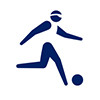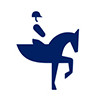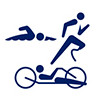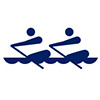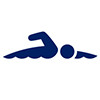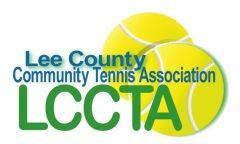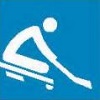Wheelchair curling is enjoyed recreationally as well as competitively by athletes of varying ability levels and ages as it requires less physical exertion than most traditional sports.
It is not an aerobic activity, and all that is needed is the coordination to exert a measured pushing force, and a tolerance for the cold atmosphere it is played in. Wheelchair curling is played without sweepers which makes it well suited for a two-person game such as stick-curling.
Wheelchair curling is played with the same rocks and on the same ice as regular curling, though the rocks are thrown from a stationary wheelchair and there is no sweeping. Rocks may be thrown by hand while leaning over the side of the wheelchair, or pushed by a delivery stick. This is a pole with a bracket that fits over the rock handle, allowing the rock to be pushed while applying correct rotation.
Stones delivered between the house and the near hogline must be placed within 18 inches either side of the centre line and must be released prior to reaching the near hogline.
